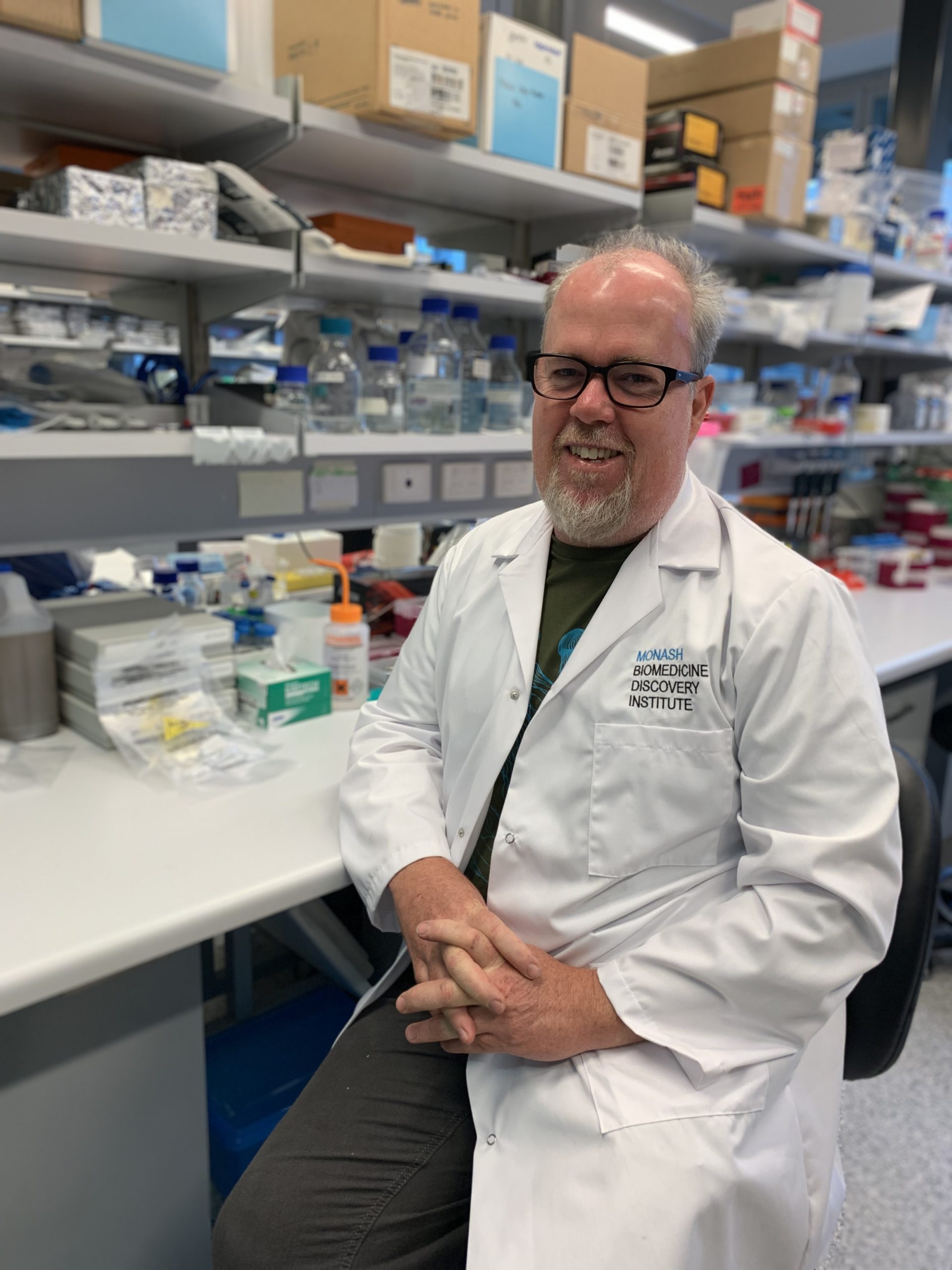Published Feb. 25, 2020
 Ian Smyth, Ph.D. | Monash University, Australia
Ian Smyth, Ph.D. | Monash University, Australia
PKD Foundation (PKDF): How did you first get involved in PKD research?
Ian: By chance and happenstance. I have a background in developmental biology (with a dash of human genetics) and our principle interest over the past 5–10 years has been in trying to understand how the kidney forms and in studying birth defects in the organ. However, through this work we became interested in the role of a cell structure called the “primary cilia” in regulating kidney cell behavior and, of course, this is central to the development of PKD. In a sense we’ve wandered into the field, but it’s a fascinating area with many unanswered questions and a considerable need for more research.
PKDF: What are you working on currently?
Ian: At the moment, we are trying to understand how different signaling pathways control the decision of kidney cells to divide (or not divide) in the context of cyst development. We’ve identified one such pathway which we think is critical to disease development in PKD but not to normal development of the organ. The major questions are how does this pathway work, what regulates it (and what does it regulate), and can we target it as a therapy for PKD?
PKDF: What would you like the patient community to know about your research?
Ian: My group uses mice as a model of disease. I think that’s critical for understanding disease processes in ways that can’t readily be approached using cells or organoids (mini kidneys grown in a dish). PKD is a complicated disease involving a complex interaction of cell biology, physiology, immunology, and a range of other contributing factors. In my view, the best way to study it experimentally is in a living organism. The downside to that is that experiments can take a (relatively) long time and they are also very expensive. Still, I think that’s worth it for the insights such work can provide.
PKDF: Do you have a personal connection to PKD?
Ian: Not directly, but I’ve come to know several people who have the condition or are touched by it since we started working seriously on it. PKD Australia also does a terrific job in arranging meetings which blend medicine, science, and the patient experience. These are great for focusing our minds on the reason why we do what we do and, in particular, for giving junior scientists in the group some perspective on why their work is important.
PKDF: What excites you most about this research?
Ian: When I first started working on PKD I was amazed that there were still so many unanswered questions and poorly understood mechanisms underpinning such a (relatively) common condition. In many respects that’s still the case, but I am encouraged by the recent rapid advances in therapies, the advent of new clinical trials, and by the new tools we have as scientists to better understand disease mechanisms. I think that in the next 10 years our understanding of the condition and our ability to treat it will move forward swiftly.
PKDF: What are some of your personal interests outside of research?
Ian: I love spending time with my lovely partner and our two boys — camping, hiking, and seeing the world. I also have a profound love of fly-fishing. I am rarely happier than wandering up a wilderness river in New Zealand. There is something about the all-consuming focus of trying to fool an animal with a brain the size of a pea that makes me forget whatever trouble there might be in the world and to engage completely with wild places.
PKDF: Anything else you’d like to share?
Ian: My enormous gratitude to the PKD Foundation for providing the opportunity to do our work. Science funding in Australia is tough and often focused on “common” diseases. For that reason, the support of the Foundation has made a huge difference to our research efforts and I’m enormously appreciative of all the people who made contributions to allow us to undertake these studies.
Check out Dr. Smyth’s grant and others funded by PKDF here!
PKD Foundation is the largest private funder of PKD research in the U.S. Since 1982, we’ve invested over to $50 million in more than 1,300 research, clinical, and scientific grants, fellowships, and scientific meetings. Each year, The Foundation identifies and supports the work of scientists and researchers from around the world who look for ways to treat and eventually cure PKD.
Our vision is to #endPKD. Donations help fund necessary research that leads to more effective treatments and ultimately a cure for PKD.









0 Comments